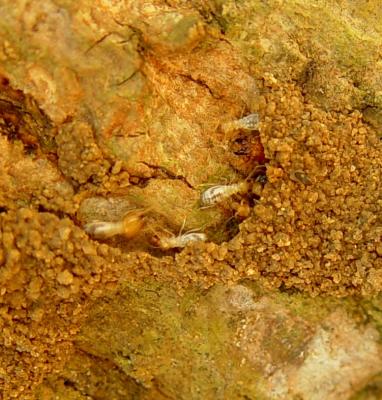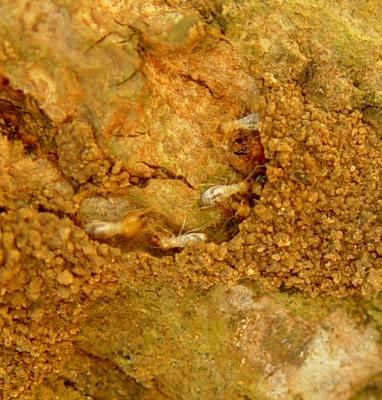

Termites (Microtermes spp., Macrotermes spp., Allodontermes spp., and Odontotermes spp)
Often referred to as "white ants", they occasionally cause partial or total defoliation of maize seedlings, but are mainly damaging to older maize plants. Severely damaged plants may lodge and be completely destroyed by termites. The longer a field has been cultivated, the greater will be the yield losses caused by termites. Their feeding inside the stems causes the plant to wither and sometimes die. Termites begin to attack the roots and stems about 3 months after planting, and eventually cover them with tunnels built of soil. As plants mature the amount of damage increases rapidly. Infestation is particularly serious in dry season. It has been established that termites can damage up to 25% of maize crops in Malawi (WISARD Project Information, 2001).
- Promote conditions for healthy plant growing to prevent termite damage.
- Plough field to destroy the termites' nest, runways, and tunnels and to expose them to predators, such as ants, birds, chicken, etc.
- Practise crop rotation to reduce the build-up of termites.
- Remove plant residues and other debris especially moist and decaying woods.
- Harvest at the right time, as termites often attack maize left in the field after maturity. Attacked stalks may fall down and the termites may attack the cobs and panicles.
- Where there is risk of termite infestation, avoid leaving the crop in the field after harvest on stooks, stacks or windrows.
